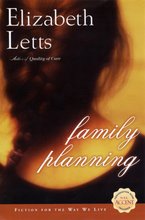Monday, July 28, 2008
Economics and Children
This outstanding book has much to offer with its powerful lesson about famine and hunger, the introduction of Moroccan culture and vocabulary, and the dramatic folk-art illustrations. The Butter Man communicates in a sensitive and careful way what it may feel like to experience extreme scarcity and how a particular family gets through the difficult time. Readers will appreciate how this important lesson is woven into an engrossing story with a unique international context.
Wednesday, July 23, 2008
Just One More Book Podcasts on The Butter Man
If you want to listen: click here
Friday, April 18, 2008
Friday, March 21, 2008
Another Wonderful Review
Every Saturday night, young Nora's baba (father) cooks up a big pot of couscous using a special pot he brought with him from his native Morocco. One Saturday, Nora protests Baba's "no snacks before dinner" rule, saying she's "staaarving," which prompts Baba to tell her the story of a time in his youth when he was truly hungry. As his daily portion of bread shrank and the family's supply of butter disappeared, young Baba grey hungrier and hungrier, and his father left to seek work and food. To distract Baba from his hunger, his clever mother suggested each day that he go out by the road to wait for the "butter man." Though the butter man never actually appeared, there was plenty to watch by the roadside, and eventually Baba's father returned home with food. As the tale is finished and Nora's family sits down to eat, their experience is quite different ("We eat and eat until we are full, and there is always some left to save for our lunch tomorrow"), but there's a nicely subtle parallel between the two generations of parents trying to distract their hungry offspring. Descriptive language and avoidance of didacticism give Nora's and Baba's contrasting stories genuine emotional impact. The gradually shrinking amount of bread makes Baba's hunger palpable: "One day the piece of bread my mother had given me was so small I could close my fingers all the way around it, and it was so hard that when bread was plenty, I would have tossed it to the cow to eat." Essakalli's blocky folk art gouache paintings are delicately accented with patterns of dots and dashes, with warm tones of browns, golds, reds, and turquoises predominating. Nora and the adult Baba are situated in contemporary times by their modern clothing (Baba sports attractive red tennies) and hairstyles, which contrasts with the more distanced depictions of the Morocco landscape and people of Baba's childhood. Though Baba's depiction of hunger will, one hopes, be unfamiliar to most kids who see this book, it obviously still exists in many places, and this might be a fine way to introduce that problem to youngsters who, like Nora, frequently claim to be "staaarving." An author's note explains more about Morocco and the Berber people, and a glossary is included. JH
Thursday, February 21, 2008
The Butter Man made The Dean's List!

DR. SUE ANN MARTIN
Sue Ann Martin, Dean of the College of Communication and Fine Art, first became interested in children’s literature when she wrote her Ph.D thesis on the oral characteristics of the Caldecott Award-winning children’s books. Her Ph.D is in Speech and Interpretation with a cognate in Early Childhood Education. She went on to review children’s books for The Detroit Free Press, write three popular resource books for teachers regarding children’s books and the creative process and reviewed newly- published books for Arts Almanac Specials. Her 2002 children’s books special for CMU Public Radio won a Merit Award in Special Interest Programming from the Michigan Association of Broadcasters. QUOTE: Reading books aloud to young children is one of the most satisfying ways to introduce them to the beautiful sounds and lilts of the language, to the wonders of the world, to the excitement of suspense and to the pleasure of concentration while at the same time bonding with the child in a genuine, long lasting way. My mother did the same with me as she read hours and hours of Robert Louis Stevenson poems from his ‘A Child’s Garden of Verses’ to me when I was a child.
Tuesday, February 19, 2008
A Rave Review!
There are books that you need to read a couple of times before their meaning becomes clear. These artful treasures take more time to explain the story as it travels upon the road less traveled, a gentle breeze of description and not a gale-force wind.
Today we visit with just such a book. The title is "The Butter Man" and it has been created by Elizabeth Alalou and Ali Alalou.
Completing this collaboration on illustrations is Julie Klear Essakalli. Half the size of many other picture books, this well-told story is twice the size in its meaning to the reader.
The first page gives away one of this book's secrets with the italicized words that do not look familiar to me. That is because the words are taken from the High Atlas Mountain region in Morocco. The word definitions and pronunciations glossary are at the end of the book. Our story begins with a father telling about a time in his life in Morocco when he was a young boy. This faraway part of the country is the setting for the story that is about to be shared.
This life lesson on how fortunate we are as a nation is important to hand down to our children. To them, life has almost always been easy and food, along with shelter, has always been provided. Unlike the stories I had been told as a young boy, there is no mention of a blinding snow 5 feet deep and a trek of 20 miles to the nearest school.
This story hits home with a stronger punch as it deals with the lack of
plentiful food for a period of time. The rains had been distant and the crops had suffered, as well as the people who tended them. The bread became smaller and harder in texture and with less flavor. The butter that once smothered the bread was long gone, yet not forgotten.
It is a story of trust in hard work and doing the right thing that accompanies so many lives. It also shares with the reader the return to plentiful times. The text comes back full circle at the end of the book, giving the reader a quiet resolve of circumstances dealt.
Illustrations are of a folk art feel and colorful yet reserved to the tones that would be associated with a dry climate. The pictures tell the story without the emotion that well could have been played upon in this read. The feeling you walk away with is one of travel. This book has captured the sense of traveling to another part of the world and returning home again.
This look into someone's past is presented in a positive matter-of-fact way. The optimism of the mother and the focus on the butter man gave a resolve that will stay with the reader like a full dinner. It is OK to visit some uncomfortable subjects in life with our young readers if it is done with respect and clarity.
This book has accomplished both objectives in my mind. The basics of life are not to be taken for granted. This book will add a visit to a faraway land as well as a sense of well being for others. Best for ages 4 to 6 with guidance from an adult reader.
--Brad L. Hundman --Redlands Daily Facts
Friday, February 08, 2008
Partnering with The High Atlas Foundation

Friday, January 11, 2008
Kirkus and Booklist love The Butter Man!
Booklist - January 15, 2008
Every Sunday night, Nora watches her Moroccan-born baba (father) prepare a couscous meal in a special pot that he carried with him to the U.S. in his suitcase. One evening, Baba shares a story about how he coped with a famine during his childhood, spent in the mountains of Morocco. The authors, a married couple who drew on Ali's personal experience, write in descriptive language that speaks directly to children. Baba says that hunger, for example, feels like "a little mouse gnawing on my insides." The folk-art paintings, created by a textile designer, feature whimsical characters and cozy domestic scenes, while the ocre, gold, and rust palette evokes the feeling of the dusty, sunlit landscape. An author's note adds cultural context, and an appended glossary defines the Berber words used in the text. This warm family story about a rarely viewed culture will have particular appeal among children of immigrants, who, like Nora, wonder about their parents' mysterious, former lives in another land.
JANUARY 01, 2008
Saturday evening, Nora's mother is at work, and Nora waits for her father to cook couscous. To pass the time, he talks about his childhood in Morocco. During a time without rain, his father sold the cow and left for the mountains to work. Soon, there was no butter left and only bread to eat. Young Ali's mother sent him to wait for the butter man, but Ali ate the bread before his arrival. Day after day this happened, until finally, Ali's father returned with food. And the butter man? Perhaps he never came, but the rain did, and eventually, the family was able to buy another cow. With perfect timing, Nora's mother arrives home from work, and the family enjoys a flavorful feast in a satisfying conclusion of this realistic Jack in the Beanstalk tale. Essakalli's memorable gouache illustrations provide a sense of place, and while the Berber words in the text are not always immediately defined, a glossary is located in the back. Also includes an informative author's note on the Berber, or Imazighen, people of Morocco. (Picture book. 5-9)








